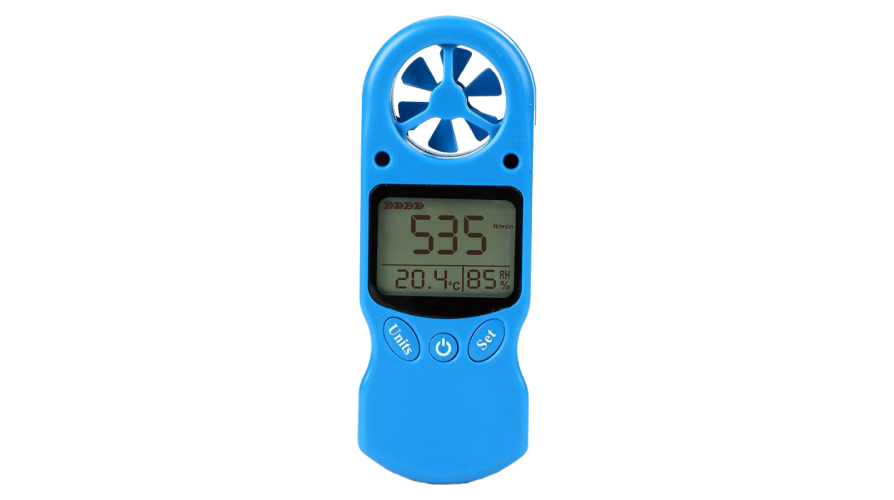Exploring the Functions and Benefits of Anemometers for Weather Lovers and Specialists
From cup anemometers to sonic anemometers, each type brings its distinct collection of benefits and applications, losing light on different aspects of atmospheric problems. As we dig right into the features and benefits of anemometers, a much deeper understanding emerges not just of prevailing climate sensations yet likewise of the broader effects for industries like wind energy manufacturing and environmental study.
Relevance of Anemometers in Weather Condition Monitoring
Anemometers play an essential duty in climate tracking by giving precise dimensions of wind speed, assisting in forecasting and understanding weather patterns. These tools, ranging from typical cup anemometers to contemporary ultrasonic anemometers, are important for meteorologists, scientists, and weather lovers alike. By measuring wind rate, anemometers aid in figuring out the strength of climate sensations such as tornadoes, cyclones, and tornados. Additionally, they offer beneficial information for air travel, maritime procedures, and numerous industries that are sensitive to wind conditions.

Sorts Of Anemometers and Their Applications
With the critical duty anemometers play in climate surveillance and forecasting, comprehending the numerous sorts of these tools and their applications ends up being vital for professionals and enthusiasts in the area. One of the most usual kinds of anemometers include mug anemometers, vane anemometers, hot-wire anemometers, and ultrasonic anemometers. Mug anemometers consist of 3 or 4 mugs installed on horizontal arms that revolve with the wind, determining its speed. Vane anemometers, on the various other hand, utilize a freely turning vane to line up with the wind instructions, giving both wind speed and instructions dimensions. Hot-wire anemometers operate based upon the principle of convective warm transfer, where the cooling effect of the air circulation is measured to determine wind rate. Ultrasonic anemometers use ultrasonic acoustic wave to determine wind speed and instructions accurately.
Cup anemometers are ideal and durable for basic climate tracking, while vane anemometers are favored for directional dimensions. Ultrasonic anemometers are non-intrusive and offer high precision, commonly made use of in research and specialized weather tracking applications.
Benefits of Making Use Of Anemometers in Projecting
In weather forecasting, the application of anemometers offers indispensable benefits for boosting the accuracy of weather condition projecting. Anemometers gauge wind speed and instructions, giving crucial data for forecasting weather patterns. By incorporating wind information into projecting designs, meteorologists can better recognize the activity of weather condition systems, prepare for adjustments in atmospheric conditions, and concern a lot more exact projections.
Moreover, anemometers play an important role in analyzing potential weather risks. Keeping an eye on wind rates aids forecasters anticipate serious weather events such as cyclones, tornadoes, and wintertime tornados with better precision. This very early caution system enables authorities to release timely alerts and implement necessary safety measures, decreasing the threats to life and residential or commercial property.
Furthermore, anemometers help in optimizing renewable energy manufacturing. By examining wind patterns, meteorologists can recognize ideal locations for wind farms and predict power outcome, contributing to the efficient generation of wind power.

Anemometers in Wind Energy Production
Provided the vital function anemometers play in providing accurate wind information for weather condition forecasting and risk evaluation, their relevance includes the realm of wind energy manufacturing. Anemometers are vital tools in the field of wind power, where the dimension of wind rate and instructions is vital for identifying the expediency and effectiveness of wind generator setups. By precisely measuring wind rates at varying heights, anemometers assist maximize the positioning and design of wind turbines to make the most of energy output.
In wind farms, anemometers are strategically positioned to gather real-time wind information that is utilized to analyze the prospective power manufacturing of a my company site. This information is instrumental in identifying the financial viability of wind power tasks and in forecasting energy generation to make certain grid security. Additionally, anemometers help in checking wind problems to optimize generator efficiency, avoid damage from high winds, and make sure the security of employees working in the vicinity of wind turbines.
Enhancing Weather Comprehending With Anemometers

Anemometers play an essential function in improving our understanding of microclimates. These localized climate problems can vary substantially from wider local projections, making it important to have precise data for particular locations. anemometer. By purposefully positioning anemometers in various places, researchers can collect in-depth info on how wind acts in different terrains, metropolitan environments, or bodies of water
Moreover, anemometers add to improving climate forecasting versions by offering real-time information on wind actions. This information is especially valuable for predicting severe weather condition events, optimizing agricultural practices, and sustaining industries like aeronautics and maritime navigation. Generally, anemometers are vital tools that enable us to delve much deeper into the intricacies of weather condition systems, ultimately resulting in even more better-informed choices and precise predictions.
Conclusion
In conclusion, anemometers play an important function in weather condition surveillance and forecasting by determining wind rate and direction. They are essential devices made use of by weather fanatics and professionals to collect accurate information for forecasting weather patterns and evaluating possible impacts. Anemometers additionally have applications in wind energy production, additional highlighting their importance in both weather forecasting and renewable resource industries. On the whole, anemometers add to boosting our understanding of weather phenomena and boosting forecasting capacities. anemometer.
From mug anemometers to sonic anemometers, each kind brings its distinct collection of advantages and applications, dropping light on various aspects of atmospheric conditions. These tools, varying from traditional cup anemometers to contemporary ultrasonic anemometers, are vital for meteorologists, researchers, and weather click over here now condition lovers alike. The most usual types of anemometers consist of cup anemometers, vane anemometers, hot-wire anemometers, and ultrasonic anemometers. Cup anemometers are ideal and durable for basic climate tracking, while vane anemometers are preferred for directional dimensions. Anemometers are crucial tools in the area of wind power, where the dimension of wind speed and direction is important for determining the expediency and efficiency of wind turbine installations.